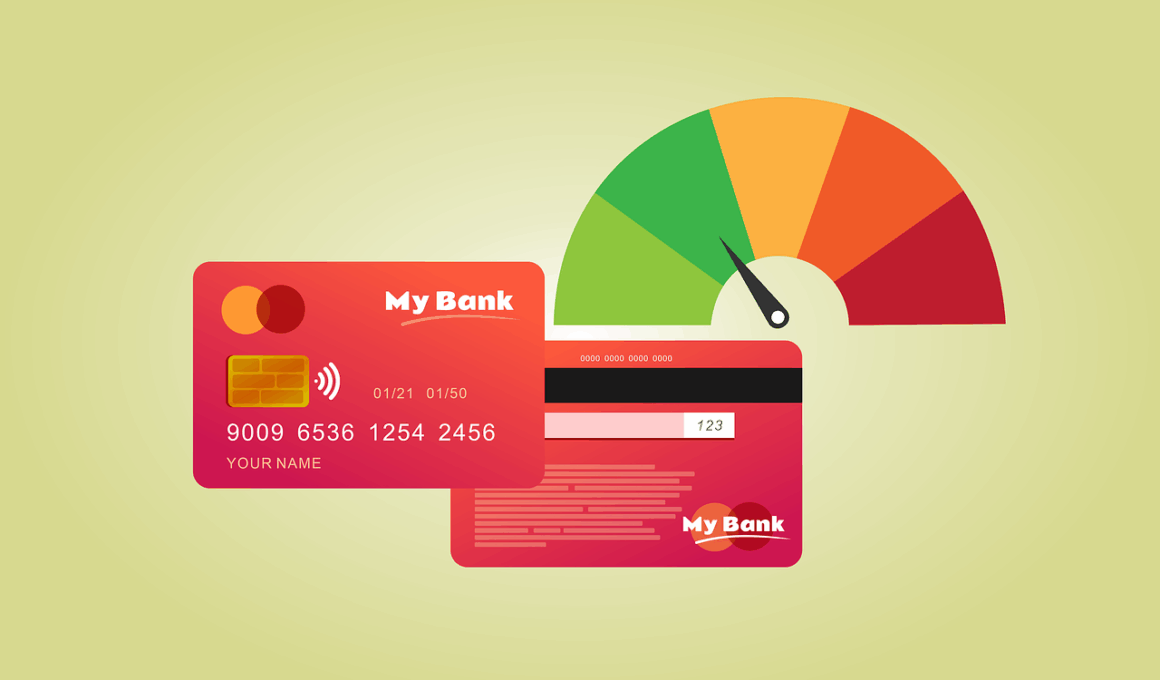How Secured vs. Unsecured Loans Use Credit Scores Differently
Credit scores are vital determinants when applying for loans. They signify your creditworthiness to lenders, influencing the decision-making process regarding approvals. Lenders highly regard credit scores due to their ability to predict repayment behaviors effectively. A high credit score generally leads to lower interest rates and better terms. This is crucial when choosing between secured and unsecured loans. Secured loans, which are backed by collateral, may have more lenient requirements because the lender has an asset to seize if payments are missed. Unsecured loans, relying solely on credit scores, involve greater risk for lenders. Therefore, borrowers with lower credit scores may find it challenging to secure such loans. They might face higher interest rates for unsecured loans, reflecting the additional risk that lenders perceive. Moreover, lenders often impose stricter terms on these loans, leading to increased scrutiny of credit histories. This is especially true for borrowers seeking substantial loan amounts, as lenders aim to mitigate risks as much as possible. Ultimately, understanding the importance of credit scores in accessing loans can help you navigate your financing options wisely.
The impact of credit scores on secured loans is markedly different from their influence on unsecured loans. Secured loans include mortgages and auto loans, where the borrower puts forth an asset that guarantees the loan. This collateralization makes lenders more comfortable extending credit to individuals with lower credit scores. The risk is inherently reduced since the lender can recover losses through the asset if payments are defaulted. For instance, a borrower with a credit score in the mid-600s might still be eligible for a mortgage if they provide a substantial down payment or have a steady income. Conversely, unsecured loans, such as personal loans or credit cards, heavily depend on one’s credit history and score since there is no collateral involved. A lower credit score often results in higher interest rates, stricter repayment terms, and larger fees attached to these loans. Lenders view individuals with lower credit risks as potential defaults. High credit scores reflect reliable repayment history and overall financial health. Hence, they typically receive more favorable terms for unsecured loans, including lower rates, thus highlighting differences in how credit scores affect loan categories.
Another key difference lies in the approval process for secured and unsecured loans, significantly influenced by credit scores. For secured loans, the evaluation process often prioritizes the value of the collateral offered. This means loan officers may overlook a lower credit score if the collateral is substantial enough. For example, a strategically positioned property may swing the approval decision, despite a credit score that falls short. Lenders thus focus on the ratio of the loan amount compared to the collateral value, ensuring that their investment is secure. On the other hand, unsecured loans hinge primarily on a borrower’s creditworthiness as expressed through their scores. The evaluation process for these loans is rigorous and primarily centered around credit reports detailing payment patterns and financial behavior. Borrowers with outstanding credit scores often enjoy smoother approvals with fewer demands from lenders. Additionally, for borrowers with problematic credit histories, improving their credit score can open doors to better terms, ensuring access to needed financing options, whether secured or unsecured. Understanding this differentiation can empower borrowers to manage their credit profiles effectively.
Understanding Lenders’ Perspectives
From a lender’s perspective, the choice between secured and unsecured loans ultimately hinges on risk assessment. Higher-ranking credit scores provide lenders with the assurance of borrowers’ reliability and capability to repay debts on time. This assurance plays a critical role when it comes to unsecured loans, where the risk of default directly impacts lenders’ revenue. A borrower with an excellent credit history can often expect lower interest rates, reflecting their favorable standing in the lending ecosystem. Lenders then tailor their offerings to balance risk with potential profit. Interestingly, secured loans offer a different narrative, as they allow lenders to placate potential losses through collateral. They reason that with collateral backing, the borrower poses a lower risk. As a result, some lenders may implement more flexible approval criteria, accommodating individuals who historically might not qualify for traditional loans. Borrowers with specialized financial situations, including those with credit challenges, can sometimes find a path to financing through secured loans. This understanding of lenders’ rationale can be slightly motivating for borrowers aiming to harness their collateral strength effectively.
Moreover, understanding the consequences of one’s choices regarding secured and unsecured loans can significantly impact financial health. Obtaining a secured loan can be a strategic decision for individuals wanting to leverage their assets effectively. However, this comes with the inherent responsibility of maintaining timely repayments to avoid losing the collateral provided. Missed payments could result in the lender foreclosing on the asset, leading to substantial financial and emotional repercussions. Conversely, unsecured loans offer flexibility that attracts many borrowers seeking quick cash but come with risks like higher interest rates. The potential for debt accumulation and credit damage exists if strict repayment guidelines are not adhered to. Essentially, unsecured loans can seem appealing initially; however, an unfavorable credit score can transform this opportunity into a burden, underscoring the significance of ongoing financial education. Striking a balance between borrowing needs and maintaining robust credit health is crucial in effective financial management. To comprehend the implications surrounding each loan type can prepare borrowers to make informed decisions that benefit their long-term financial health.
In addition to credit scores, other factors play integral roles in determining loan approval, influencing both secured and unsecured options. For instance, debt-to-income ratio, employment stability, and overall financial history significantly influence lenders’ decisions. Lenders look keenly at the borrower’s ability to handle monthly payments effectively. Therefore, a borrower might secure a loan with a lower score if they possess a low debt-to-income ratio. This key metric reveals financial discipline and the ability to manage expenses efficiently, often pleasing lenders. For unsecured loans, this ratio plays an essential role in evaluating borrowers. A high debt-to-income ratio can make it challenging to obtain approval, regardless of one’s credit score. Such scrutiny ensures lenders mitigate the risk of non-payment. Overall, a holistic approach focusing on credit scores and overall financial health is essential. Borrowers can improve their chances of securing loans by understanding these interconnected elements and the weight each carries during the decision-making process. This interconnectedness demonstrates the importance of a well-rounded approach to personal finance.
Long Term Credit Implications
Engaging in secured versus unsecured loans can yield long-term implications on your credit profile. For example, securing a loan generally can enhance your credit mix, positively impacting your credit score. This diversification demonstrates lenders that you can manage different forms of credit responsibly. This attribute is viewed favorably by scoring algorithms, which often leads to score improvements over time. However, it is essential to remain vigilant with repayments, as missed payments can reverse any positive effects secured loans may have offered. Conversely, while unsecured loans can improve scores through responsible usage, excessive reliance on these loans can lead to significant credit deterioration if not managed appropriately. A pattern of late payments or high outstanding balances can negatively affect your borrowing potential. Understanding the nuances of how both loan types contribute to your credit history enables borrowers to strategize effectively. Responsible management of both secured and unsecured loans, from timely repayments to maintaining low balances, can mitigate risks and support overall credit health. Proactively educating oneself on maintaining healthy credit practices encourages lasting financial soundness for the future.
In conclusion, the differences in how secured and unsecured loans utilize credit scores highlight various avenues available to potential borrowers. Understanding these differences empowers borrowers, allowing them to navigate financing options more skillfully. They can capitalize on their credit scores and financial circumstances to leverage their borrowing power. Individuals with lower scores may find opportunities through secured loans, gaining favorable terms by utilizing collateral. However, they must recognize the significance of adhering to payment schedules to protect their assets. In contrast, those with higher credit scores often find appealing opportunities among unsecured loans, enjoying lower interest rates and more favorable terms. The key takeaway is that financial education plays a critical role in helping individuals manage their credit profiles effectively. Awareness of how credit scores impact different loan types can prepare borrowers to make informed decisions. As financial landscapes continue to evolve, adapting knowledge towards credit management will benefit individuals immensely. By maximizing their financial opportunities through secured and unsecured loans, borrowers can work towards achieving their goals while building a stronger financial foundation.


